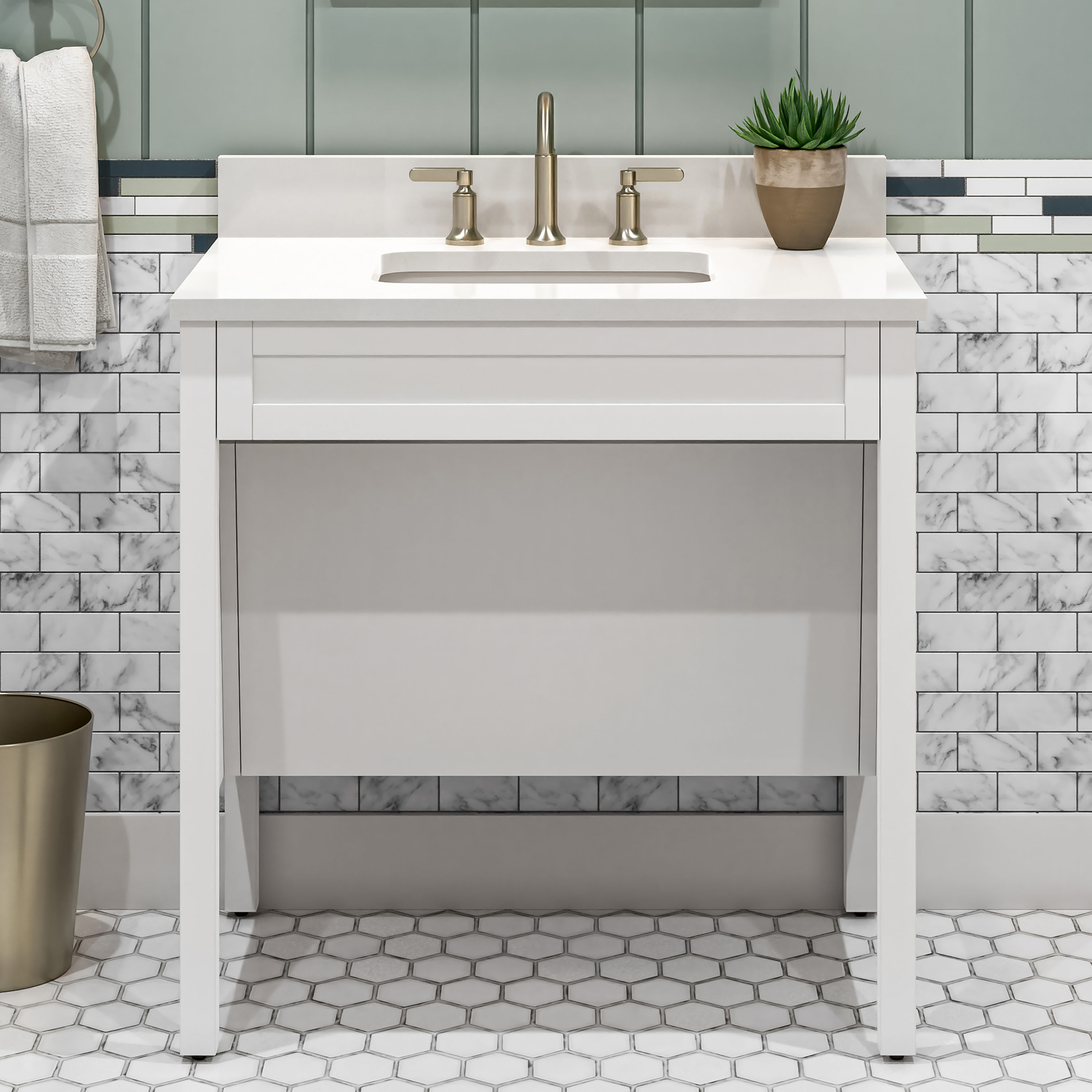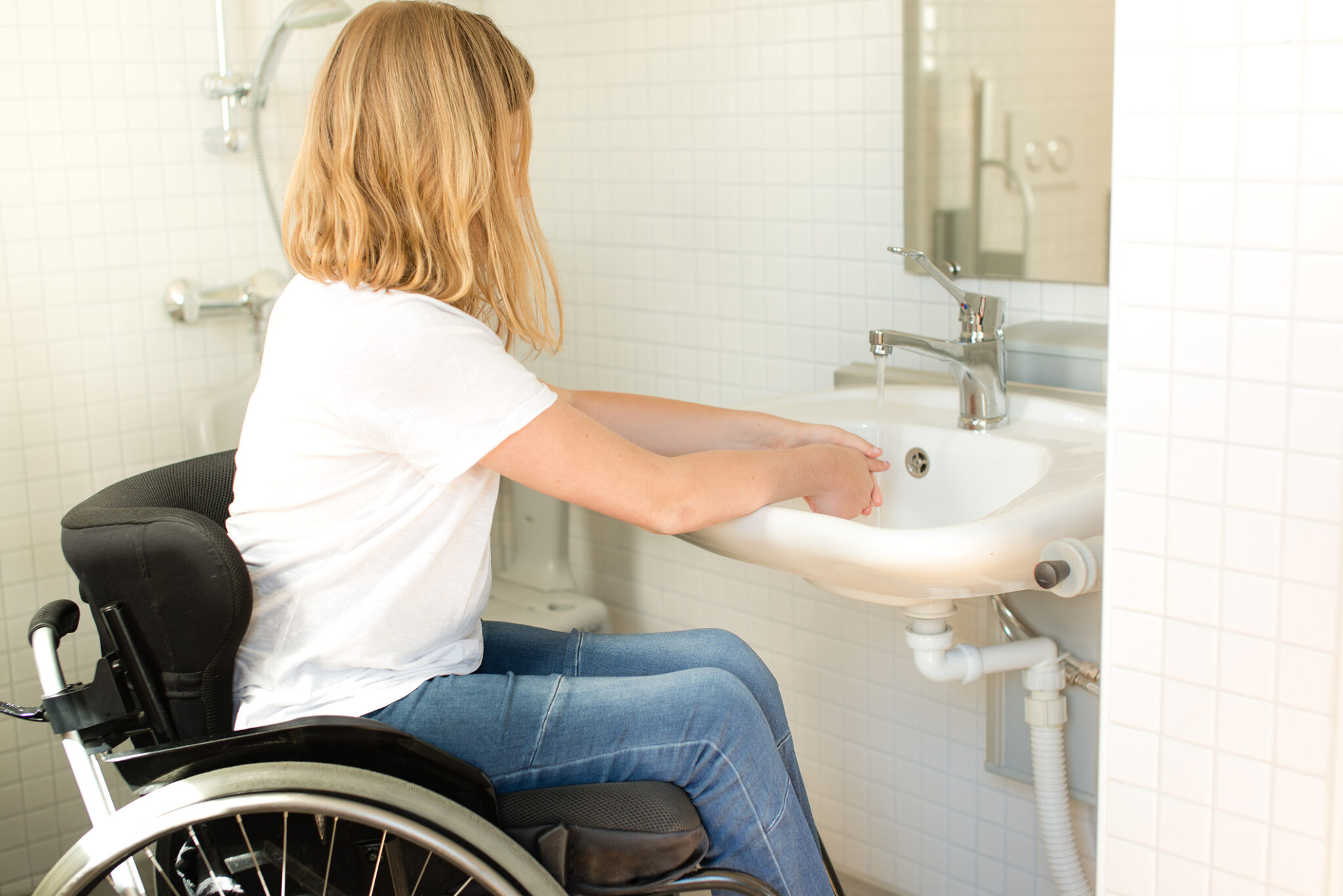Understanding the Concept of Wheelchair Accessible Bathroom Sinks

Wheelchair accessible bathroom sinks are specifically designed to meet the needs of individuals who use wheelchairs. They are characterized by features that make them easier to use from a seated position, such as:
- Lower height: Wheelchair accessible sinks are typically lower than standard sinks, making it easier for wheelchair users to reach the faucet and controls.
- Knee clearance: The space under the sink is designed to provide ample knee clearance, allowing wheelchair users to comfortably roll up to the sink.
- Lever handles: Lever handles are easier to operate for individuals with limited hand mobility.
- Sensor faucets: Sensor faucets eliminate the need to touch the faucet, making them ideal for individuals with limited hand function.
Accessibility standards and guidelines play a crucial role in ensuring that bathroom sinks are accessible to all users. These standards provide specific requirements for the height, knee clearance, and other features of wheelchair accessible sinks.
For those with mobility challenges, wheelchair accessible bathroom sinks provide a safe and comfortable bathing experience. These sinks are typically installed at a lower height and feature lever handles for easy operation. If you’re looking for a stylish and functional bathroom vanity, consider small bathroom vanity with vessel sink.
These vanities often feature a sleek design and ample storage space. By incorporating a wheelchair accessible bathroom sink into your bathroom design, you can create a more inclusive and accessible space for all.
Types of Wheelchair Accessible Bathroom Sinks
There are various types of wheelchair accessible bathroom sinks available, each with its own advantages and disadvantages:
- Roll-under sinks: Roll-under sinks provide maximum knee clearance, allowing wheelchair users to roll completely under the sink. They are ideal for individuals with limited upper body mobility.
- Adjustable-height sinks: Adjustable-height sinks allow the height of the sink to be adjusted to suit the needs of the user. They are a good option for individuals who use wheelchairs of different heights.
- Wall-mounted sinks: Wall-mounted sinks are mounted on the wall, providing ample knee clearance. They are a good option for small bathrooms or bathrooms with limited space.
Key Considerations for Designing Wheelchair Accessible Bathroom Sinks

Designing wheelchair accessible bathroom sinks requires careful attention to specific measurements, placement, and fixture selection to ensure optimal functionality and comfort for individuals with mobility impairments.
Essential Measurements and Dimensions
- Sink height: The sink should be positioned between 30 and 34 inches from the floor to allow wheelchair users to reach and use it comfortably.
- Sink depth: The sink should be shallow enough to prevent splashing but deep enough to accommodate assistive devices, such as reachers or grab bars.
- Sink width: The sink should be wide enough to allow for side-to-side movement and provide ample space for washing.
- Knee clearance: The space beneath the sink should provide at least 27 inches of knee clearance to allow wheelchair users to approach the sink without obstruction.
Proper Placement and Height Adjustment, Wheelchair accessible bathroom sink
The sink should be placed directly in front of the wheelchair user, allowing them to easily access the sink and controls. The sink should be height-adjustable to accommodate different user needs and ensure proper posture.
Sink Fixtures and Accessories
Various sink fixtures and accessories can enhance accessibility, including:
- Lever handles: Lever handles are easier to operate for individuals with limited hand mobility.
- Touchless faucets: Touchless faucets allow users to turn on and off the water without touching the handles.
- Soap dispensers: Soap dispensers should be mounted within reach of wheelchair users.
- Grab bars: Grab bars provide additional support and stability for wheelchair users.
Practical Applications and Case Studies: Wheelchair Accessible Bathroom Sink

Wheelchair accessible bathroom sinks are not just a matter of compliance; they are a matter of dignity and independence for individuals with disabilities. These sinks provide a means for people to care for their personal hygiene with dignity and comfort, and they can make a significant difference in their quality of life.
There are many different types of wheelchair accessible bathroom sinks available, each with its own unique features and benefits. Some of the most common types include:
- Roll-under sinks: These sinks are designed to allow a wheelchair user to roll under the sink and access the faucet and controls. They typically have a large open space underneath the sink, and the faucet is often mounted on the side of the sink rather than the back.
- Knee-space sinks: These sinks are designed to provide ample knee space for a wheelchair user. They typically have a large cutout in the front of the sink, and the faucet is often mounted on the back of the sink.
- Height-adjustable sinks: These sinks can be raised or lowered to accommodate the needs of the user. They are a good option for people who have difficulty reaching the sink or who need to use the sink while seated in a wheelchair.
In addition to these basic types of sinks, there are also a number of other features that can be added to make a sink more accessible. These features include:
- Grab bars: Grab bars can be installed around the sink to provide support for users who need assistance getting in and out of their wheelchair.
- Lever handles: Lever handles are easier to use for people with limited dexterity than traditional knobs.
- Soap dispensers: Soap dispensers can be mounted on the sink or wall to make it easier for users to reach the soap.
- Paper towel dispensers: Paper towel dispensers can be mounted on the sink or wall to make it easier for users to dry their hands.
Wheelchair accessible bathroom sinks are an important part of making bathrooms accessible for people with disabilities. They can provide a means for people to care for their personal hygiene with dignity and comfort, and they can make a significant difference in their quality of life.
For those seeking a bathroom tailored to accessibility, a wheelchair accessible bathroom sink is paramount. Its ergonomic design ensures ease of use for individuals with limited mobility. If you’re drawn to a rustic aesthetic, consider a farmhouse galvanized bathroom sink.
Its rugged charm complements the practicality of a wheelchair accessible bathroom sink, creating a space that seamlessly blends style and functionality.
